Pomelo (Citrus maxima) belongs to Rutaceae citrus genus native citrus subfamily pomelo, China’s cultivation of pomelo has a history of more than 4,000 years, the main places of origin are Guangxi, Guangdong, Chongqing, Fujian, Hunan, etc., the main varieties of shatian pomelo, wendan pomelo, koon kee honey pomelo, etc., with an annual production of 5 million tonnes or more. Pomelo peel is a by-product of pomelo, accounting for 40% to 55% of the weight of the entire pomelo, containing essential oils, pectin, lemon bitters, dietary fibre and other active substances, with antioxidant, anti-bacterial, anti-tumor, antihypertensive, hypoglycemic and other efficacies, it can be used for the treatment of cardiovascular disease, phlegm and cough, blood tonic and spleen. The development and utilization of more than 2 million tons of pomelo peel produced in China every year can not only avoid environmental pollution, but also prepare high-value products such as pomelo peel essential oil, pectin, dietary fibre, flavonoids and lemon bitters. Pomelo peel essential oil can be prepared by cold pressing, supercritical CO2 extraction, water vapour distillation and ultrasonic assisted extraction. The antibacterial property of D-limonene in pomelo peel essential oil has been reported in the literature, such as Zhang et al. found that the antibacterial activity of Shatian pomelo and Xiangtu pomelo, which have the highest content of D-limonene, was higher than that of Wendan pomelo and Liangping pomelo, which have lower content of D-limonene, and Lan-phi et al. found that the antibacterial activity of Vietnamese pomelo peel essential oil in their study was also correlated with the content of D-limonene.
Although the bacteriostatic ability of limonene in pomelo peel essential oil has been demonstrated, some other terpenoids in pomelo peel essential oil have potential contribution to antioxidant and bacteriostatic abilities. There is no systematic study on the contribution of individual components of naringa essential oil to bacteriostatic and antioxidant activity, so that naringa essential oils with different compositions cannot be classified and utilised. The aim of this study was to determine the composition of the essential oils of different varieties of pomelo peel, to compare the differences in the composition of the essential oils, and to analyse the components of the essential oils of pomelo peel that have significant antioxidant and antimicrobial effects in conjunction with the results of the antimicrobial and antioxidant experiments, so as to provide technical support for the classification and development of essential oils from pomelo peel.


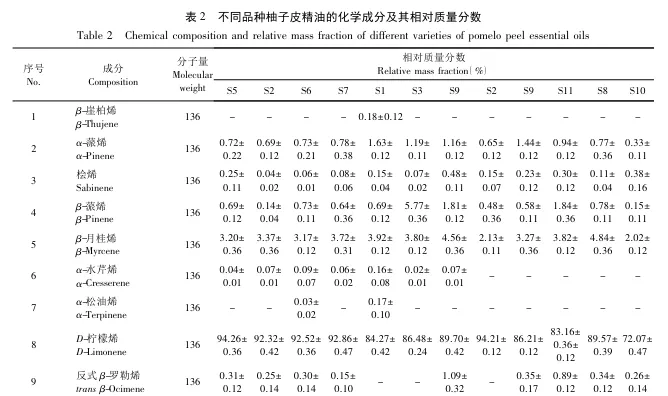

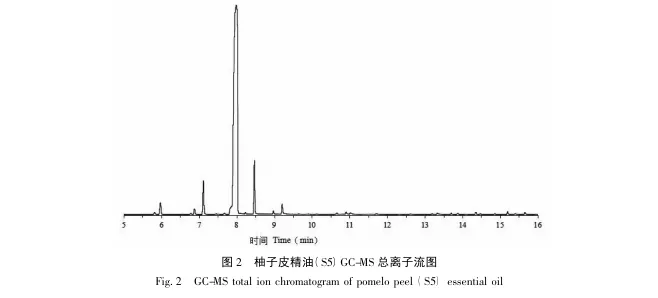
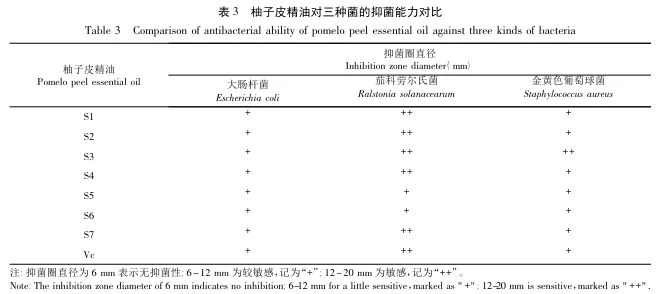

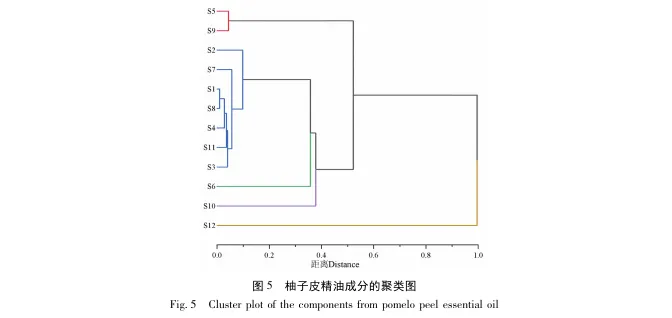
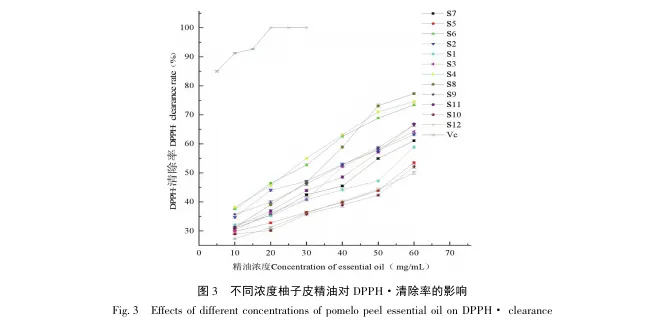
In this paper, 12 essential oils of pomelo peel were extracted by water vapour distillation, and the essential oil compositions were analysed and compared by GC-MS, and a total of 35 chemical constituents were identified, mainly terpenoids and terpenoid oxides. The most abundant terpene was D-limonene, followed by β-laurene, α-pinene and β-pinene. Terpene oxides were mainly linalool, geraniol, nerolidol, nerolidol acetate, and so on. Through the antioxidant and bacteriostatic ability testing experiments, combined with PCA and hierarchical cluster diagram analysis, the most antioxidant and bacteriostatic components were judged to be D-limonene, citral, and linalool in the order of the most antioxidant and bacteriostatic effects, whereas stigmasterol, geraniol, and α-salicylenol had certain antioxidant and bacteriostatic abilities.
In recent decades, plant essential oils have attracted attention for their natural antioxidant, antibacterial, antitumour and anti-inflammatory properties and a range of other pharmacological effects, and because they are natural and non-polluting. However, the composition of essential oils from different sources varies greatly, and the differences in composition are reflected in the differences in product activity. The main component of the essential oils of Citrus sinensis from the Brassicaceae family, such as orange peel and grapefruit peel, is D-limonene, and the antibacterial and antioxidant effects of limonene have been demonstrated in the literature, whereas the differences in the activity of essential oils from different species of Citrus sinensis are affected by the types and contents of the non-limonene components. In this study, citral, linalool, and stigmasterol, geraniol, and α-watercressene were screened for a series of components with antibacterial and antioxidant activities, but the species of citrus rind essential oils involved were limited, the microbial species targeted in the inhibition experiments were limited, and the activity tests were restricted to antibacterial and antioxidant activities. The next step of the study will be to expand the range of species, form a small database of citrus essential oil constituents, and extend the activity test to common pharmaceutical activities.
